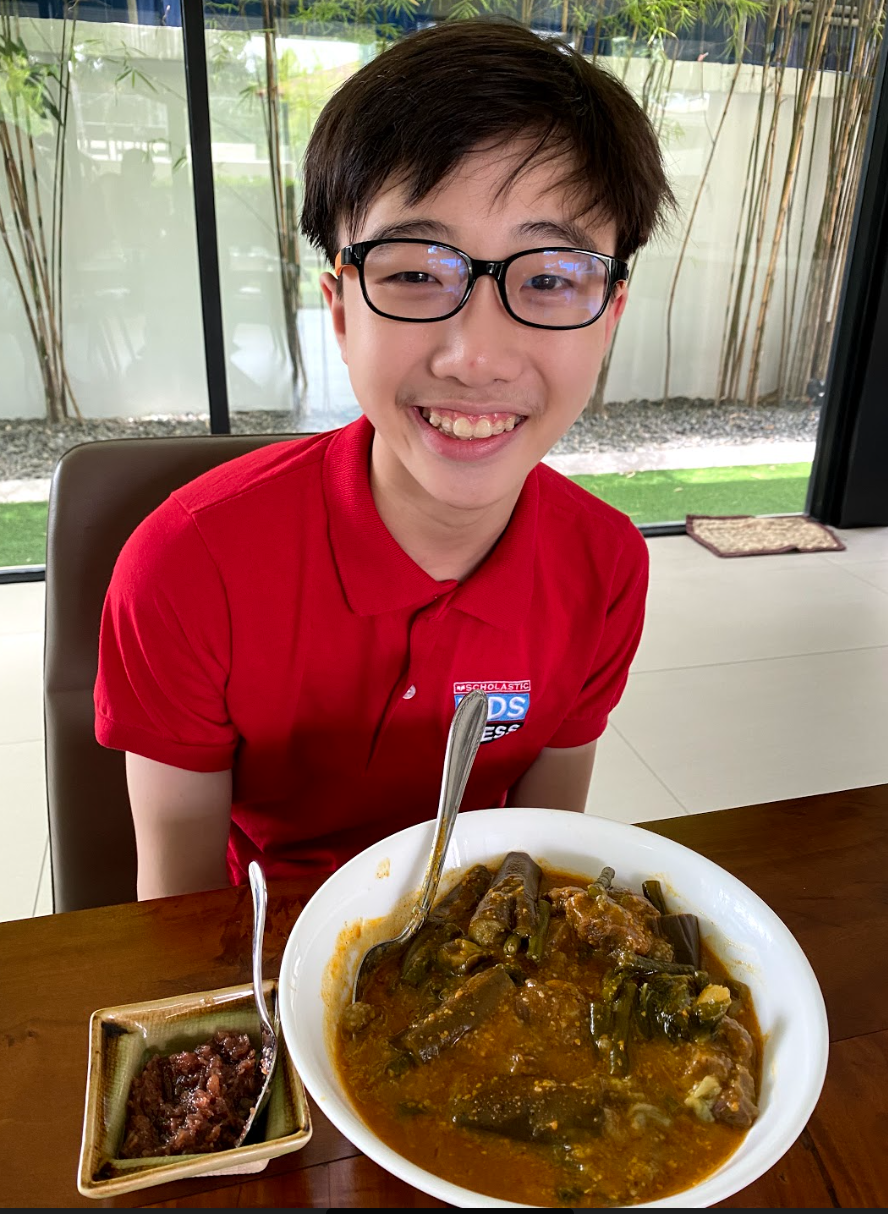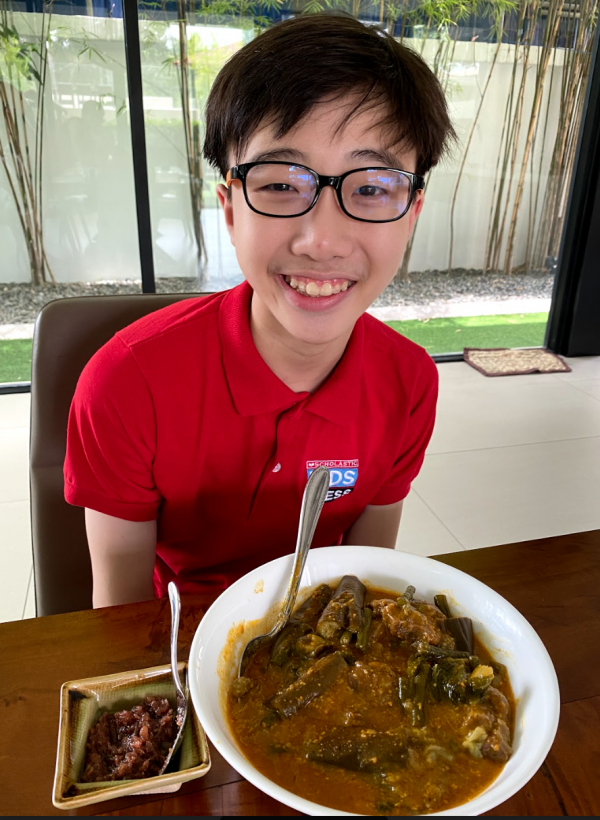KID REPORTERS’ NOTEBOOK
What Is Kare-Kare?


Colin gets ready to enjoy kare-kare, a traditional Filipino stew.
Kare-kare is a Filipino stew that features a thick peanut sauce. The local dish is enjoyed by families in the Philippines, the country in South Asia where I live. It is said that no “fiesta” (festival) is complete without kare-kare.
Marlon Ahorro, a chef in the Metro Manila area, learned how to make kare-kare from his grandmother. The ingredients vary, but historically, the stew was made from oxtail, the cheapest part of the cattle or ox, beef tripe (stomach tissue), and pig’s feet, among other inexpensive meats.
“Filipinos are resourceful,” Ahorro said. “That’s why they use beef innards and other parts of the beef for kare-kare.”
Ahorro boils and then simmers the oxtail, tripe, animal skin, and other meats in a traditional pot. It takes a while to tenderize the meat. He then sautees the mixture in annatto oil. The oil is made by steeping annatto seeds, which come from an achiote tree, in olive oil or vegetable oil. Sometimes, water is mixed with the annatto seeds instead of oil. The liquid mixture adds a reddish-orange color to the stew.
ENJOYING KARE-KARE ON THE GO
The word “kare-kare” is derived from another popular dish, curry. “It’s called kare-kare because we adapted it from our Malay ancestors and neighbors,” Ahorro explained.
Indeed, the stew resembles curry with its yellowish-orange color, which comes from adding peanuts or peanut butter. After tenderizing the meat, Ahorro adds beef stock, peanut butter, and a thickening agent called galapong, which is made from a mixture of rice and water.
Water is added to dilute the thick mixture, and the stew is then seasoned with salt and balanced with a touch of sugar. Chile and other seasonings also may be added.
In a separate pot, such vegetables as eggplant, string beans, and bok choy are briefly boiled and served as toppings. Blanched banana blossoms, which come from a fleshy, purple-skinned flower, are also common additions. Finally, the kare-kare is served with bagoong, a salted shrimp paste.
These days, most people don’t have time to cook kare-kare traditionally. So its ingredients are sold in supermarkets in small cloth bags. You just add the mixture to a pot of water and boil it. Brands like Mama Sita’s now enable many Filipinos to enjoy this traditional dish on the go.
